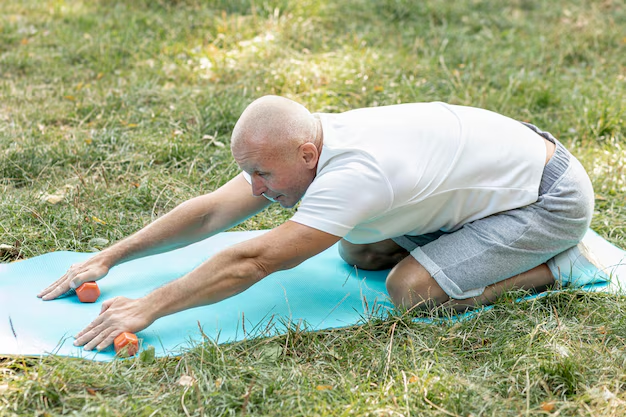Is Yoga a Good Choice for Osteoporosis Management?
For those grappling with osteoporosis, finding effective ways to manage this condition is crucial. This bone-thinning disorder makes bones brittle and increases the risk of fractures, thereby affecting millions worldwide. Interestingly, yoga, an ancient practice renowned for its holistic benefits, is gaining traction as a possibly valuable approach to bolster bone health. But how exactly does yoga help those with osteoporosis?
The Benefits of Yoga for Bone Health
Yoga Enhances Balance and Coordination
A key advantage of incorporating yoga into your routine is its focus on improving balance and coordination. These skills are critical for preventing falls, a common concern for those with osteoporosis. Poses like the Tree Pose or Warrior III require concentration and stability, thus reducing the likelihood of falls and subsequent fractures.
Promotes Bone Density
Certain yoga poses create tension in muscles, which in turn exerts stress on bones. This stress can prompt bone-building cells into action, effectively increasing bone density over time. Engaging in weight-bearing poses, like Chair Pose or Downward Dog, offers similar skeletal strength benefits to what is seen with traditional resistance exercises.
Reduces Stress and Supports Overall Well-being
Yoga isn’t just about physical benefits; it also offers psychological relief. Managing osteoporosis can be emotionally taxing, and yoga helps mitigate stress with deep breathing and meditative components. This reduction in stress can indirectly benefit bone health, as excessive stress hormones can contribute to bone loss.
Important Considerations and Modifications
Protecting Fragile Joints
While yoga can be beneficial, it's essential to approach practice prudently, especially when dealing with osteoporosis. Opt for classes designed for osteoporosis or seek the guidance of instructors knowledgeable about bone health. Avoid poses that could lead to spinal flexion or excessive twisting, which can be risky.
Consult with Healthcare Providers
Before starting any new exercise regime, individuals should consult their healthcare provider or a specialist in osteoporosis. Tailoring a yoga practice to individual needs ensures safety and maximizes health benefits without compromising bone integrity.
Exploring Broader Support Options
For those diagnosed with osteoporosis, it's worthwhile to explore beyond personal health practices to ensure complete support. Financial concerns often accompany medical needs, ranging from treatment costs to lifestyle modifications.
Consider These Support Resources:
🏛️ Government Aid Programs: Investigate Medicare or Medicaid services to help cover medical expenses related to osteoporosis management.
💰 Financial Assistance for Health Services: Look for community-based programs that support individuals with chronic health conditions.
💳 Debt Relief Options: Explore consolidating outstanding medical bills to reduce financial stress and fulfill medical care obligations efficiently.
🎓 Educational Grants: Consider pursuing educational grants that offer sudden, essential knowledge about managing osteoporosis effectively.
Incorporating yoga into your wellness routine provides a promising path for managing osteoporosis. By combining physical strength, stress reduction, and improved balance, along with exploring available financial and educational resources, individuals can effectively face the challenges of osteoporosis while maintaining a higher quality of life.

Related Topics
- a Nurse Is Caring For a Client Who Has Osteoporosis.
- a Percutaneous Is Performed To Treat Osteoporosis Related Compression Fractures
- Can Alcohol Cause Osteoporosis
- Can I Do Pilates If I Have Osteoporosis
- Can I Reverse Osteoporosis
- Can Men Get Osteoporosis
- Can Osteoporosis Affect Teeth
- Can Osteoporosis Be Cured
- Can Osteoporosis Be Painful
- Can Osteoporosis Be Reversed